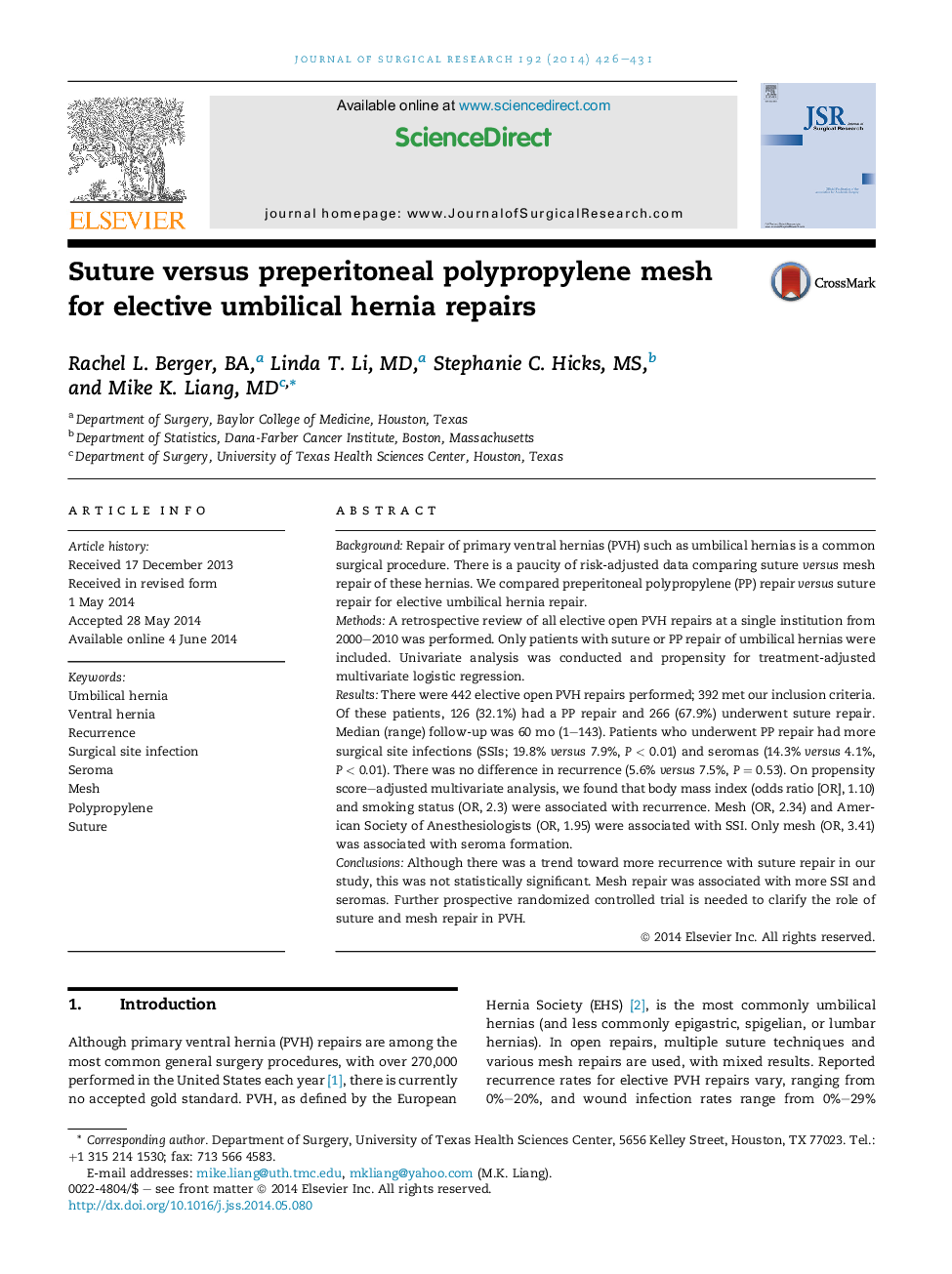| Article ID | Journal | Published Year | Pages | File Type |
|---|---|---|---|---|
| 4300015 | Journal of Surgical Research | 2014 | 6 Pages |
BackgroundRepair of primary ventral hernias (PVH) such as umbilical hernias is a common surgical procedure. There is a paucity of risk-adjusted data comparing suture versus mesh repair of these hernias. We compared preperitoneal polypropylene (PP) repair versus suture repair for elective umbilical hernia repair.MethodsA retrospective review of all elective open PVH repairs at a single institution from 2000–2010 was performed. Only patients with suture or PP repair of umbilical hernias were included. Univariate analysis was conducted and propensity for treatment-adjusted multivariate logistic regression.ResultsThere were 442 elective open PVH repairs performed; 392 met our inclusion criteria. Of these patients, 126 (32.1%) had a PP repair and 266 (67.9%) underwent suture repair. Median (range) follow-up was 60 mo (1–143). Patients who underwent PP repair had more surgical site infections (SSIs; 19.8% versus 7.9%, P < 0.01) and seromas (14.3% versus 4.1%, P < 0.01). There was no difference in recurrence (5.6% versus 7.5%, P = 0.53). On propensity score–adjusted multivariate analysis, we found that body mass index (odds ratio [OR], 1.10) and smoking status (OR, 2.3) were associated with recurrence. Mesh (OR, 2.34) and American Society of Anesthesiologists (OR, 1.95) were associated with SSI. Only mesh (OR, 3.41) was associated with seroma formation.ConclusionsAlthough there was a trend toward more recurrence with suture repair in our study, this was not statistically significant. Mesh repair was associated with more SSI and seromas. Further prospective randomized controlled trial is needed to clarify the role of suture and mesh repair in PVH.
